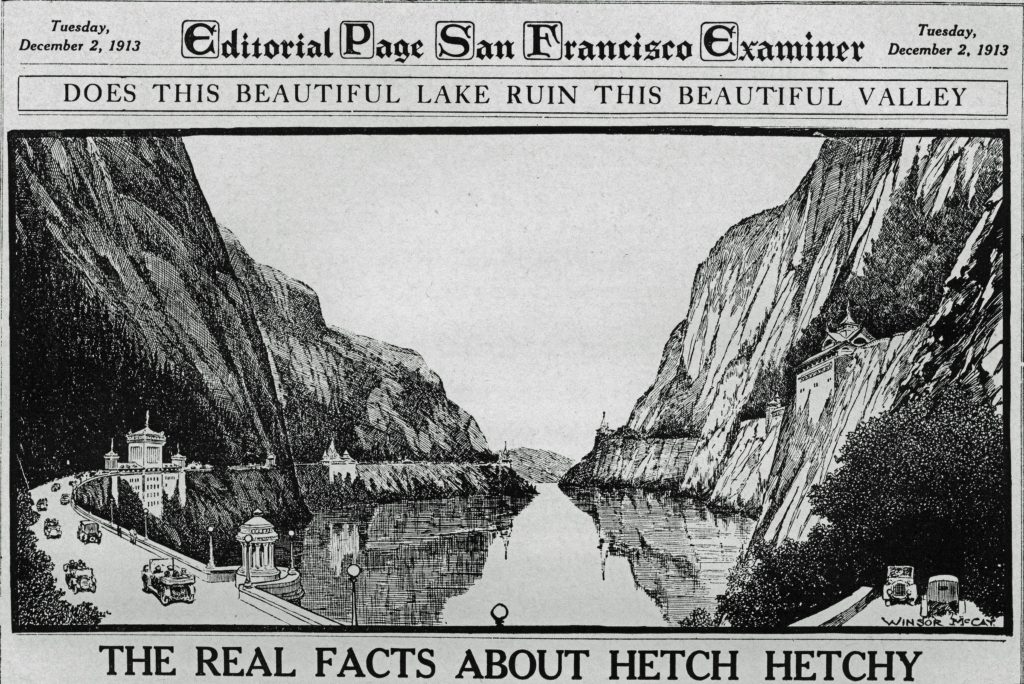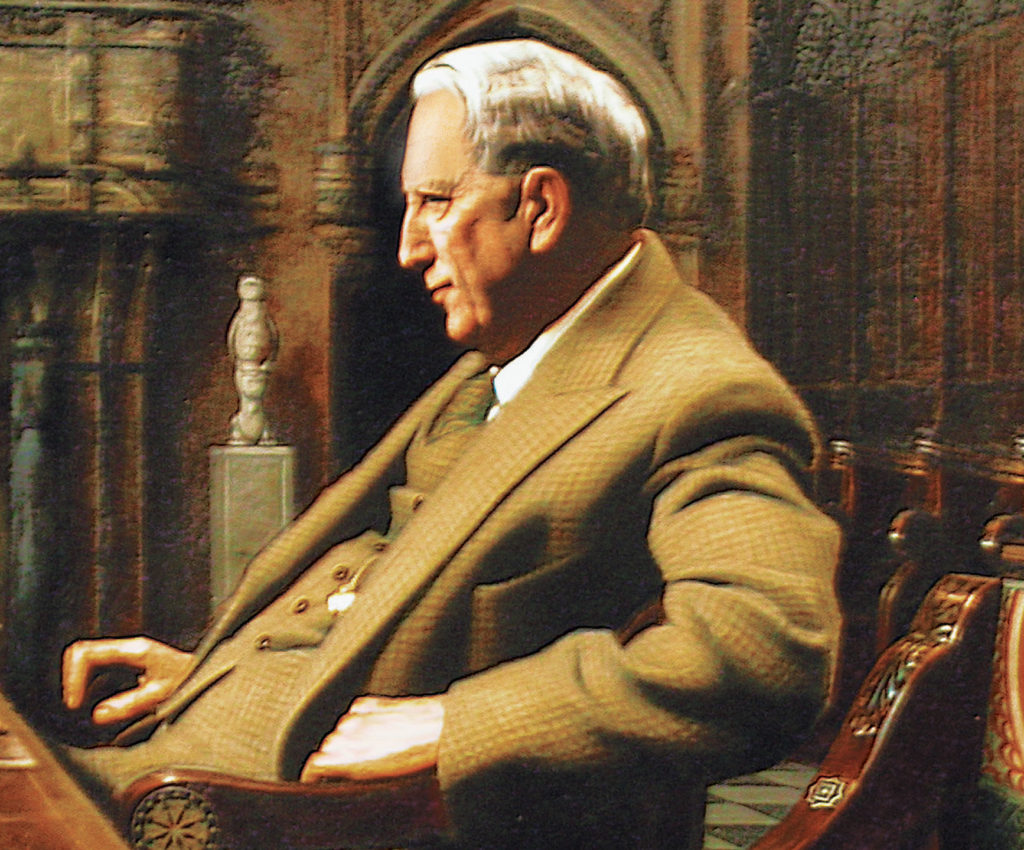Just a touch of history. Sadly, sometimes telling lies pays off.
The San Francisco Examiner, and its Publisher William Randolph Hearst, were among the most fervent supports of damming Hetch Hetchy Valley in the early 20th Century. In 1913, as the Raker Act was headed to a crucial vote before the United States Senate, the Examiner published a special Washington DC-only issue dedicated to swaying the vote.

Some of the facts printed by the Examiner in its zeal to pass the Raker Act were debatable. And the courts found that some of the facts were not only incorrect, they were libelous.
So far, so good. It’s the Examiner’s right to advocate. However, as Senator Daniel Patrick Moynihan and others have famously said, “Everyone is entitled to their own opinions, but not their own facts.”
The Examiner’s argument in favor of damming Hetch Hetchy did indeed go beyond stating facts. The newspaper smeared Taggart Aston, an engineer who had written to Congress opining that San Francisco could develop the Mokelumne River at lower cost (and without need to dam Yosemite’s Hetch Hetchy Valley). Describing Aston, the Examiner printed:
“Tool, sycophant or hireling of the said Eugene J. Sullivan, and, therefore, of “a thief” and “of a
man who ought to be in the penitentiary” and that as such he would “stultify himself and prostitute his personal honor and professional reputation to do the servile bidding of such an employer without reference to truth and right” (Quotes from San Francisco Examiner)
As Restore Hetch Hetchy supporters know, the Raker Act the Raker bill passed the Senate on December 6, 1913, with 43 “yeas”, 25 “nays” and 28 abstentions. President Woodrow Wilson signed the bill into law on December 19, 1913. Might the vote might have been different, if Sullivan’s proposal to develop the Mokelumne River instead had been given serious consideration?

Publisher William Randolph Hearst was found guilty of libel for statement about engineer Taggart Aston.
In 1914, Taggart sued the Examiner and Hearst for defamation and won. The Examiner and Hearst appealed and lost. Taggart’s reputation was restored, but Hetch Hetchy Valley was clear cut and buried beneath 300 feet of water behind O’Shaughnessy Dam.
In 1923, Oakland, Berkeley and other East Bay cities created the East Bay Municipal Utility District and then built Pardee Dam on the Mokelumne River, delivering water to the Bay Area by 1929. EBMUD even provided emergency supplies to San Francisco in the early 1930’s before San Francisco had completed its pipelines from the Tuolumne. Since EBMUD started its project after San Francisco and finished earlier, perhaps Aston was right after all that the Mokelumne was a more practical project.
While the Mokelumne is no longer available, there are other options available to San Francisco that would obviate the need for Hetch Hetchy Reservoir. If you’ve not seen Yosemite’s Opportunity: Options for Replacing Hetch Hetchy Reservoir, please check it out.

